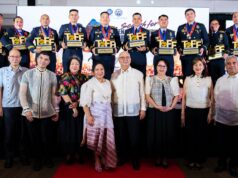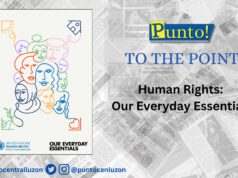I read with interest an p_posts in this newspaper by a good friend of mine, Tonette Orejas, titled “Kapampangans recover missing saint’s image.” It tells of the theft and quick recovery of a 19th century image of St. John the Apostle.
What I found riveting about the story, however, wasn’t the role that modern-day communication technologies played in the success of efforts to locate the missing religious heritage.
It was the potential of tapping historians and their encyclopedic knowledge of the past to solve common crimes, whether committed today or a long time ago.
Among those who figured in the heart-pounding search for and rescue of the image of St. John of Apostle was Dr. Lino L. Dizon, director of the Tarlac State University’s Center for TarlaqueHo Studies.
Although Prof. Dizon’s part in the detective work did not go beyond forwarding an S.O.S. email to book author and fellow Kapampangan Alex Castro (who did a search of his own) I believe he was able to make a simple but crucial decision of alerting somebody who could do something because of his work as a historian.
Knowing the right people who have the capability and the predisposition to help is a matter of training. For this reason alone, I can say that historians can work wonders in solving crime puzzles.
However, I must admit there’s more to detective work than information dissemination. Crime investigation entails knowledge of people, places, events and documents, past or present, living or dead, printed or displayed on an LCD screen.
In these things, again, I dare say historians like Prof. Dizon have solid grounding, thus suited for detective work.
For example, according to Prof. Dizon, one can easily find out how certain landed families were able to acquire their vast tracts of land. And don’t be surprised if in the closet of one or two of these families you will discover the skeleton of a former revolutionary leader who fought in the Philippine revolution against Spain and the subsequent Filipino-American War.
Using a simple framework, Prof. Dizon clues us in on the secret: During the Spanish period, land titling wasn’t a serious thing. Infact, there was virtually no system of land registration to speak of. It was only upon the coming of the Americans—who introduced the Torrens System—that lands began to be registered for the purpose of real estate ownership.
Now, who do you think trooped to the Registers of Deeds to register lands, not necessarily their own? The moneyed class, the educated class and the revolutionary leaders, many of whom were both moneyed and educated, Prof. Dizon said.
How about the poor and illiterate peasants in the barrios? They didn’t even know what was happening.
Prof. Dizon also speculates on the possibility of revolutionary leaders being allowed by the American government to own large tracts of lands in exchange for giving up the fight and laying down their arms.
Thus, not only can historians reconstruct the past, but they can also reconstruct the past to detect crimes.
Landgrabbing, for example.
What I found riveting about the story, however, wasn’t the role that modern-day communication technologies played in the success of efforts to locate the missing religious heritage.
It was the potential of tapping historians and their encyclopedic knowledge of the past to solve common crimes, whether committed today or a long time ago.
Among those who figured in the heart-pounding search for and rescue of the image of St. John of Apostle was Dr. Lino L. Dizon, director of the Tarlac State University’s Center for TarlaqueHo Studies.
Although Prof. Dizon’s part in the detective work did not go beyond forwarding an S.O.S. email to book author and fellow Kapampangan Alex Castro (who did a search of his own) I believe he was able to make a simple but crucial decision of alerting somebody who could do something because of his work as a historian.
Knowing the right people who have the capability and the predisposition to help is a matter of training. For this reason alone, I can say that historians can work wonders in solving crime puzzles.
However, I must admit there’s more to detective work than information dissemination. Crime investigation entails knowledge of people, places, events and documents, past or present, living or dead, printed or displayed on an LCD screen.
In these things, again, I dare say historians like Prof. Dizon have solid grounding, thus suited for detective work.
For example, according to Prof. Dizon, one can easily find out how certain landed families were able to acquire their vast tracts of land. And don’t be surprised if in the closet of one or two of these families you will discover the skeleton of a former revolutionary leader who fought in the Philippine revolution against Spain and the subsequent Filipino-American War.
Using a simple framework, Prof. Dizon clues us in on the secret: During the Spanish period, land titling wasn’t a serious thing. Infact, there was virtually no system of land registration to speak of. It was only upon the coming of the Americans—who introduced the Torrens System—that lands began to be registered for the purpose of real estate ownership.
Now, who do you think trooped to the Registers of Deeds to register lands, not necessarily their own? The moneyed class, the educated class and the revolutionary leaders, many of whom were both moneyed and educated, Prof. Dizon said.
How about the poor and illiterate peasants in the barrios? They didn’t even know what was happening.
Prof. Dizon also speculates on the possibility of revolutionary leaders being allowed by the American government to own large tracts of lands in exchange for giving up the fight and laying down their arms.
Thus, not only can historians reconstruct the past, but they can also reconstruct the past to detect crimes.
Landgrabbing, for example.




